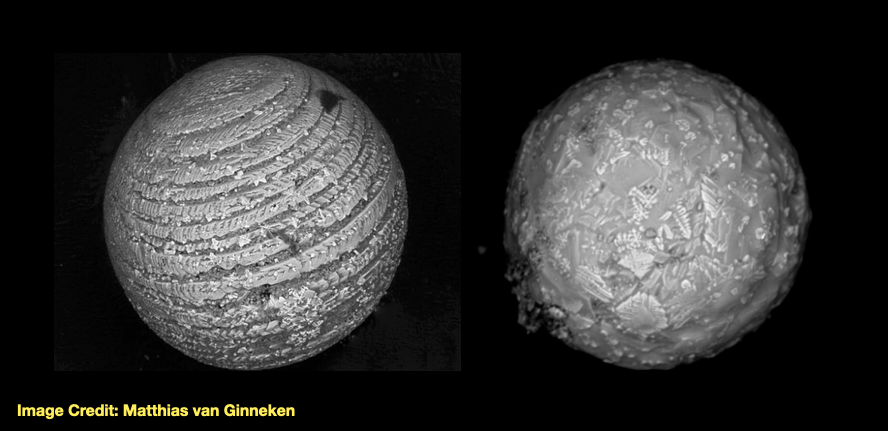
Two researchers from the University of Kent have bought the hunt for space dust to Kent, searching for micrometeorites on the roof of Canterbury Cathedral.
A search for “urban” micrometeorites led by Dr Penny Wozniakiewicz and Dr Matthias van Ginneken from the University of Kent’s School of Physics and Astronomy has received a lot of media interest in the last few days with articles in both the Telegraph and Guardian news paper.
Telegraph: Scientists seek out cosmic dust on pilgrimage to cathedral roofshttps://www.telegraph.co.uk/news/2023/07/29/scientists-cosmic-dust-cathedral-roofs/
Guardian: Kent scientists climb cathedral roofs to collect cosmic dust
For some pictures of the collection from the roof of Canterbury Cathedral and some more information on the process click here. To see the first micrometeorites found click here.
Micrometeorites are dust-sized particles that continuously rain down on the Earth from space and are integral to understanding the contents and origins of our solar system. The particles, which are smaller than a few millimetres in diameter, largely come from comets and asteroids. They smash into the Earth’s atmosphere at tens of thousands of miles per hour, and, while many burn up in the process, some melt and resolidify to form tiny, distinctive spheres that are scattered across Earth’s surface.
Those that make it to Earth help us understand how much material from space reaches Earth and becomes part of the planet or its atmosphere, as well as telling us about the origins of the solar system.

Some examples of the micrometeorites found made with a scanning electron microscope.
Until recently, these precious particles were found in remote environments away from common human activities that create vast amounts of dust, such as the deep ocean floor and Antarctica. However, Dr Penny Wozniakiewicz and Matthias van Ginneken are looking for these on cathedral roofs, which are proving to be great hunting grounds for cosmic dust because of their size and inaccessibility.
You want the site as undisturbed as possible. The dust is coming in everywhere, but the rooftops offer an opportunity to collect the dust and not have people trampling all over it.
Another advantage of cathedral roofs is that good records are kept of construction work, so the ages of different sections of roof – and how long they have been gathering dust – is well documented.
Dr Matthias van Ginneken, who is also creating 3D printed models made from CT scans of the particles explains:
While these particles are tiny, their importance is huge. They are useful to get a feel for the number of particles that are arriving at the surface. That can be related back to the number arriving at the top of the atmosphere, so we can learn about the contribution of this material to the Earth.
The pair are due to return to Canterbury Cathedral in the near future, as well as undertaking a new search at Rochester Cathedral, before moving onto other sites across the UK.
If you would like to know more about the upcoming visits, please contact the University of Kent Press Office.